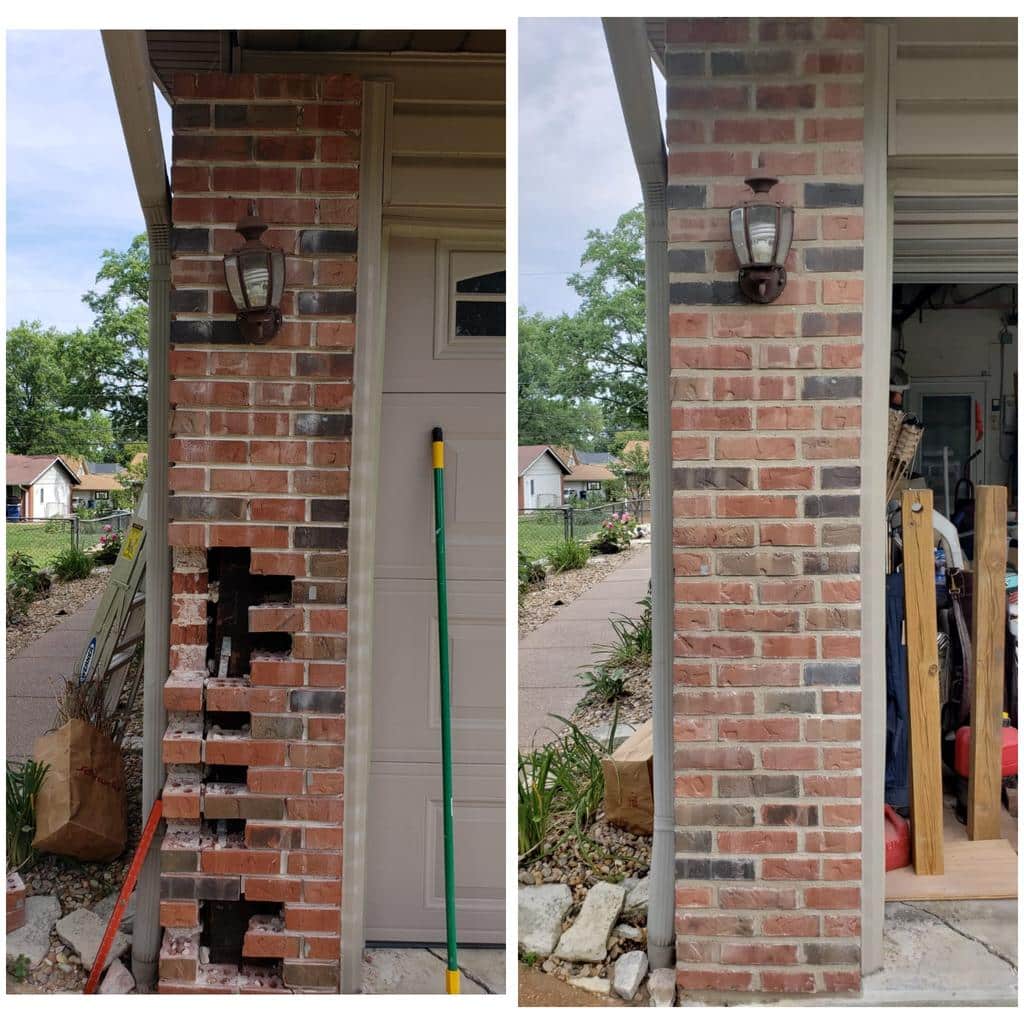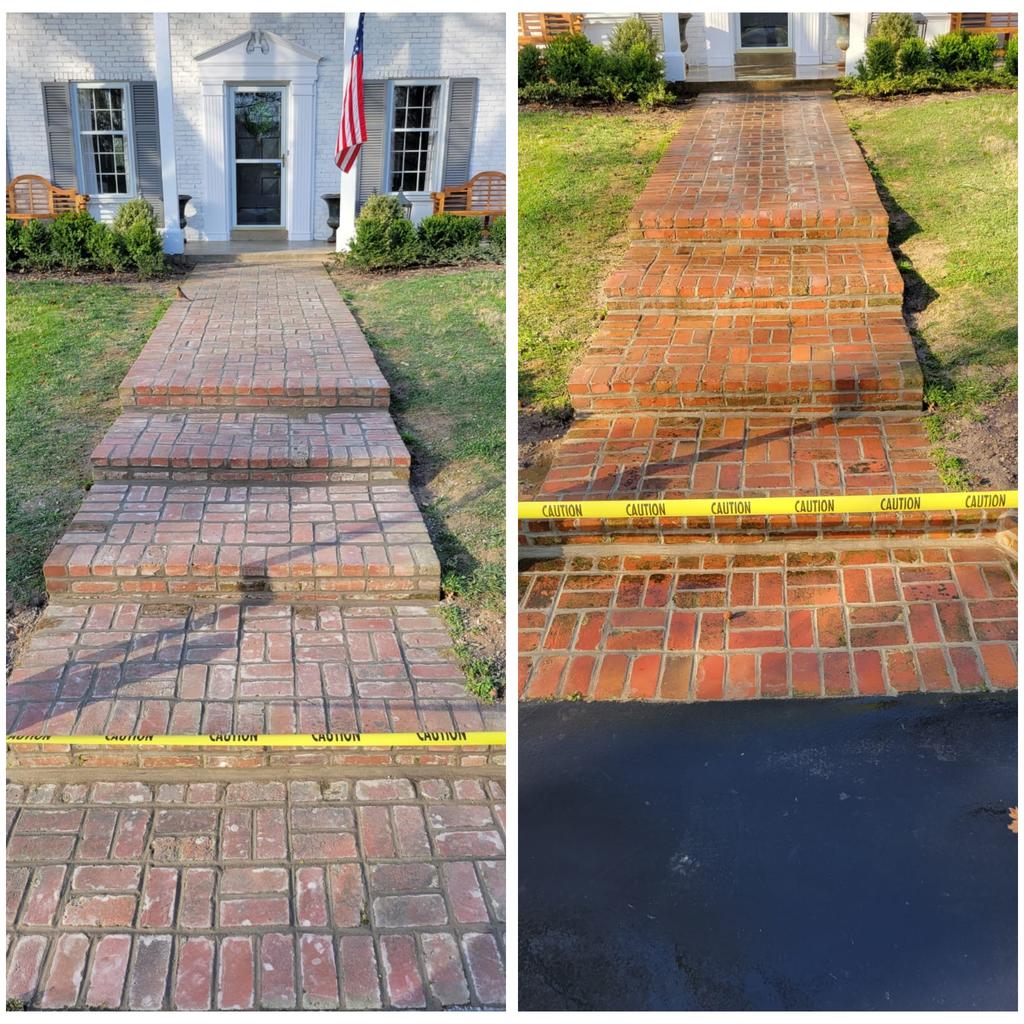Getting My Raul's Tuckpointing Llc To Work
Wiki Article
Rumored Buzz on Raul's Tuckpointing Llc
Table of ContentsRaul's Tuckpointing Llc Fundamentals ExplainedThe Best Guide To Raul's Tuckpointing LlcTop Guidelines Of Raul's Tuckpointing LlcNot known Incorrect Statements About Raul's Tuckpointing Llc
The white bows are used first, and also the surrounding mortar filled or tinted to match. Below red mortar is utilized. The white fillets are set out at regular spacing, which does not always accompany the rough spacing of the joints. Expert tuckpointers make use of devices, which, depending upon the country as well as local profession terminology, are sometimes called "jointers", "tuck irons" or "tuckpointing irons"; largely in London where the trade originated. [] Tuckpointing devices were initially made from wrought iron by blacksmiths in England during the 18th century. [] Modern tuckpointing tools are built from solidified device steel, and generally have a wooden or artificial take care of that is connected to the device surface area by a steel ferrule.The density as well as size of these devices are reliant upon the mason's preference and also the kind of brick or stonework they are tuckpointing. Wider devices are frequently used when tuckpointing stonework. There are lots of types of tuckpointing tools.


Raul's Tuckpointing Llc Things To Know Before You Buy
Tuckpointing is just one of the factors why regions like Europe have a lot of wonderful old stonework buildings that are still standing and also must be thought about throughout the construction process. Tuckpointing, occasionally referred to as repointing or block directing, is a procedure to finish or repair mortar joints in between bricks or stones with a narrow ridge of lime putty or fine lime mortar.
The final step is to blend the final layer of mortar to match the original mortar shade and fill in the thinner groove. This strategy causes clean lines as well as solid joints. Coordination with masons and also the mortar vendor is typically called for to correctly match the brand-new mortar so it blends in as effortlessly as feasible.

When remodeling or adding on to your brick or stone facility, make sure to talk about whether tuckpointing need to become part of your building bid or plan of attack. Likewise download our list below laying out additional questions to give the table as well as speak to the specialists at The Samuels Group to ensure your tuckpointing is done appropriately.
Although tuckpointing can be related to any type of sort of block building, it's most typically discovered on historical block houses, where the owners intend to regain the appearance of the residence's initial slim joints. Are you curious about shielding your worn blocks from mortar wear and tear while providing a new sharp look? Maintain reviewing to find out visit this website everything you require to find out about tuckpointing, including tips for proper installment.
What Does Raul's Tuckpointing Llc Mean?
On the various other hand, repointing cause a soft and also curly look on the new mortar joints. The edges of the blocks won't be completely square, and the repointed mortar highlights those inconsistencies. Image: istockphoto. com Prior to fixing the mortar, it helps to recognize why mortar joints fail. The damage can have various reasons, including faulty workmanship, erosion from severe temperature level and dampness, or stress from the above weight of the bricks - Brick repair St. Louis.Whether you make a decision to get your hands unclean or work with a professional, below are the steps involved in tuckpointing. To start, get rid of the existing mortar joints to a deepness of roughly one inch. Masons commonly use an angle grinder to get rid of the mortar, which is a messy job calling for a respirator mask.
Attempt obtaining the lines as straight as feasible Thoroughly use lime putty to the scraped lines to form contrasting fillets, then remove the excess. A mason typically utilizes a straightedge and also a tiny blade for this task, which leads to consistent different lines in the centers of the broader mortar joints.
Right here's what you require to recognize. Tuckpointing is the process of eliminating as well as repairing tatty mortar joints between the blocks of your home. Seth Hamby, proprietor of Precursor Residence Provider, a handyman solution in Hoover, Alabama, claims this is generally triggered by architectural stress and constant exposure to the aspects.
The Best Strategy To Use For Raul's Tuckpointing Llc
"These loosened areas require to be fixed both for look and also to keep moisture from participating in your interior wall surfaces."You can also have a professional mason examine your house to figure out if any mortar needs to be replaced. If done effectively, mortar might not need to be replaced for up to thirty years, however this also depends upon where you live.Any water taken in by the traditional will trigger growth, which can harm your home. According to Home, Consultant, tuckpointing commonly expenses in between $5 and $25 per square foot, however numerous factors can impact the last price. The size as well as accessibility of the task, time of the year, mortar kind and also building products can all impact the final price tag.
To tuckpoint a smokeshaft, costs can start at $10 per square foot as masons or service providers commonly bill added past 8 feet., after that tuckpointing the whole residence can set you back between $10,000 and also $50,000, according to Residence, Expert.
Report this wiki page